Navigation
Install the app
How to install the app on iOS
Follow along with the video below to see how to install our site as a web app on your home screen.

Note: This feature currently requires accessing the site using the built-in Safari browser.
More options
You are using an out of date browser. It may not display this or other websites correctly.
You should upgrade or use an alternative browser.
You should upgrade or use an alternative browser.
Are these lens any good?
- Thread starter powerbot
- Start date
Gavjenks
TPF Noob!
- Joined
- May 9, 2013
- Messages
- 2,976
- Reaction score
- 588
- Location
- Iowa City, IA
- Can others edit my Photos
- Photos OK to edit
The focal range is great for animal photography. Ideal, pretty much.
As for the image quality and ergonomics of a lower end lens, I don't know. Reading reviews will probably give you more and better information than whatever people on a forum feel like typing (both Amazon-type vendor-based reviews, and professional websites or critics' reviews where you can see the same person with the same mentality review different lenses for a more controlled comparison).
My guess is that it is fairly sharp, but that the reduction in cost comes from the slow speed (5.6 at tele end) and the lack of image stabilization, which effectively makes it 2 stops slower on top of that for still subjects.
Combined with the long focal length, this means lots of motion blur, or the massive inconvenience of some sort of physical stabilization, unless you're in full on broad daylight.
As for the image quality and ergonomics of a lower end lens, I don't know. Reading reviews will probably give you more and better information than whatever people on a forum feel like typing (both Amazon-type vendor-based reviews, and professional websites or critics' reviews where you can see the same person with the same mentality review different lenses for a more controlled comparison).
My guess is that it is fairly sharp, but that the reduction in cost comes from the slow speed (5.6 at tele end) and the lack of image stabilization, which effectively makes it 2 stops slower on top of that for still subjects.
Combined with the long focal length, this means lots of motion blur, or the massive inconvenience of some sort of physical stabilization, unless you're in full on broad daylight.
Last edited:
tecboy
No longer a newbie, moving up!
- Joined
- Feb 17, 2012
- Messages
- 2,977
- Reaction score
- 358
- Can others edit my Photos
- Photos OK to edit
Make sure is the one with image stabilization. Some don't have it.
bigtwinky
No longer a newbie, moving up!
- Joined
- Oct 6, 2008
- Messages
- 4,821
- Reaction score
- 286
- Location
- Montreal
- Website
- www.pierrebphoto.com
- Can others edit my Photos
- Photos NOT OK to edit
I believe the 75-300 is an older model lens, and wasn't that sharp.
The upgrade to the lens, the Canon 70-300 f/4.5-5.6 IS, which runs about $650 is a pretty sweet lens for the price and worth the extra coin. Sure the aperture is variable, but if you are shooting animals in daylight, you should be fine at 5.6 at the longer end.
I used the 70-300 when I was in Australia back in 2010 and managed to get some great images with it.
I rarely update my flickr anymore, but here's an example Seal show | Flickr - Photo Sharing!
Shot at 5.6, 1/100, ISO 400 on an and at 225mm (on a crop body, believe it was the XSI back in the day)
The upgrade to the lens, the Canon 70-300 f/4.5-5.6 IS, which runs about $650 is a pretty sweet lens for the price and worth the extra coin. Sure the aperture is variable, but if you are shooting animals in daylight, you should be fine at 5.6 at the longer end.
I used the 70-300 when I was in Australia back in 2010 and managed to get some great images with it.
I rarely update my flickr anymore, but here's an example Seal show | Flickr - Photo Sharing!
Shot at 5.6, 1/100, ISO 400 on an and at 225mm (on a crop body, believe it was the XSI back in the day)
- Joined
- Jul 8, 2005
- Messages
- 45,747
- Reaction score
- 14,806
- Location
- Victoria, BC
- Website
- www.johnsphotography.ca
- Can others edit my Photos
- Photos OK to edit
WTF? How does a lack of image stabilization make the lens "effectively" two stops slower? That would make it an f11 lens "effectively". It's not. It's an f5.6 lens. Period. HAVING IS would give you the ability to hand-hold the lens at a two-stop slower shutter-speed, but that's all. A 70-300 is a very hand-holdable lens; even using the 1/fl rule for shutter-speed, you only need to get to 1/300 of a second (easily 1/250 with practice) and chances are you don't want to shoot much slower than that, especially if you're shooting moving animals. I would also submit that classifying tri & monopods as a "massive inconvenience" is more than a bit of an overstatement....the lack of image stabilization, which effectively makes it 2 stops slower on top of that for still subjects. Combined with the long focal length, this means lots of motion blur, or the massive inconvenience of some sort of physical stabilization, unless you're in full on broad daylight.
- Joined
- Jan 20, 2012
- Messages
- 1,642
- Reaction score
- 333
- Location
- South East Tennessee, USA
- Can others edit my Photos
- Photos OK to edit
WTF? How does a lack of image stabilization make the lens "effectively" two stops slower? That would make it an f11 lens "effectively". It's not. It's an f5.6 lens. Period. HAVING IS would give you the ability to hand-hold the lens at a two-stop slower shutter-speed, but that's all. A 70-300 is a very hand-holdable lens; even using the 1/fl rule for shutter-speed, you only need to get to 1/300 of a second (easily 1/250 with practice) and chances are you don't want to shoot much slower than that, especially if you're shooting moving animals. I would also submit that classifying tri & monopods as a "massive inconvenience" is more than a bit of an overstatement.
^That
Most anytime I am trying to get sharp pictures of wildlife, I am usually at minimum on a monopod with a gimbal or a sand bag if time allows. But I don't find f/5.6 to be an issue handheld.
EDL
No longer a newbie, moving up!
- Joined
- Apr 25, 2012
- Messages
- 697
- Reaction score
- 53
- Location
- Western Pennsylvania
- Can others edit my Photos
- Photos OK to edit
The-Digital-Picture site had this to say about the lens in its review:
"The Canon EF 75-300mm f/4-5.6 III USM Lens is a relatively small, very light and very cheap lens for this focal length range.
And the 75-300 III really is cheap. You usually get what you pay for - unfortunately this is the case with the 75-300 III.
Build quality of the Canon EF 75-300mm f/4-5.6 III USM Lens is mediocre (and this may be a generous rating). Lightness is the benefit, but you won't find smooth zoom and focus rings. I wouldn't want to subject the 75-300 III to a lot of abuse as I doubt it would survive.
Image quality from the Canon EF 75-300mm f/4-5.6 III USM Lens is also mediocre.
The 75-300 III is soft wide open at all focal lengths. Sharpness decreases as it zooms from 70mm to 300mm. However, the corners are softest at 70 and getting better by 300.
Corner and center softness decrease as the 75-300 III is stopped down.
Stopping down a relatively slow lens means a lot of light (or a flash) is necessary for handheld photos. Handholding a slow lens at 300mm requires a lot of light to begin with.
A 7-blade aperture is a decent feature for a lens in this price range.
The Canon EF 75-300mm f/4-5.6 III USM Lens is most comparable to the Canon EF 75-300mm f/4-5.6 IS USM Lens. Image quality is very similar between the two. Of course, IS can offset part of the handholding dilemma.
The 75-300 III suffers from CA (Chromatic Aberration). Pincushioning is visible at 300mm. Vignetting is well controlled. Focus speed is OK, but not fast.
You can read everything at: Canon EF 75-300mm f/4-5.6 III USM Lens Review
"The Canon EF 75-300mm f/4-5.6 III USM Lens is a relatively small, very light and very cheap lens for this focal length range.
And the 75-300 III really is cheap. You usually get what you pay for - unfortunately this is the case with the 75-300 III.
Build quality of the Canon EF 75-300mm f/4-5.6 III USM Lens is mediocre (and this may be a generous rating). Lightness is the benefit, but you won't find smooth zoom and focus rings. I wouldn't want to subject the 75-300 III to a lot of abuse as I doubt it would survive.
Image quality from the Canon EF 75-300mm f/4-5.6 III USM Lens is also mediocre.
The 75-300 III is soft wide open at all focal lengths. Sharpness decreases as it zooms from 70mm to 300mm. However, the corners are softest at 70 and getting better by 300.
Corner and center softness decrease as the 75-300 III is stopped down.
Stopping down a relatively slow lens means a lot of light (or a flash) is necessary for handheld photos. Handholding a slow lens at 300mm requires a lot of light to begin with.
A 7-blade aperture is a decent feature for a lens in this price range.
The Canon EF 75-300mm f/4-5.6 III USM Lens is most comparable to the Canon EF 75-300mm f/4-5.6 IS USM Lens. Image quality is very similar between the two. Of course, IS can offset part of the handholding dilemma.
The 75-300 III suffers from CA (Chromatic Aberration). Pincushioning is visible at 300mm. Vignetting is well controlled. Focus speed is OK, but not fast.
You can read everything at: Canon EF 75-300mm f/4-5.6 III USM Lens Review
TheBiles
TPF Noob!
- Joined
- Jul 13, 2010
- Messages
- 869
- Reaction score
- 69
- Location
- MCB Quantico
- Website
- www.flickr.com
- Can others edit my Photos
- Photos OK to edit
You can get a 70-200 f/4L for the same price as the 70-300 IS. I'd take the better glass and build quality over the reach and IS.
Sent from my Galaxy S4
Sent from my Galaxy S4
Gavjenks
TPF Noob!
- Joined
- May 9, 2013
- Messages
- 2,976
- Reaction score
- 588
- Location
- Iowa City, IA
- Can others edit my Photos
- Photos OK to edit
Larger apertures let you take a non-blurry photo in lower light. This is the feature of larger apertures that explains why people call them "Fast" colloquially.WTF? How does a lack of image stabilization make the lens "effectively" two stops slower? That would make it an f11 lens "effectively". It's not. It's an f5.6 lens. Period. HAVING IS would give you the ability to hand-hold the lens at a two-stop slower shutter-speed, but that's all. A 70-300 is a very hand-holdable lens; even using the 1/fl rule for shutter-speed, you only need to get to 1/300 of a second (easily 1/250 with practice) and chances are you don't want to shoot much slower than that, especially if you're shooting moving animals. I would also submit that classifying tri & monopods as a "massive inconvenience" is more than a bit of an overstatement....the lack of image stabilization, which effectively makes it 2 stops slower on top of that for still subjects. Combined with the long focal length, this means lots of motion blur, or the massive inconvenience of some sort of physical stabilization, unless you're in full on broad daylight.
Image stabilization also lets you take non-blurry photos in lower light, by about two stops.
I am simply informally referring to both as "speed," since they have basically the same end effect in terms of low light anti-motion-blur performance. I think I was pretty crystal clear that I was only referring to motion blur performance. I also was careful to say "for still subjects." Even if you don't like the terminology, the advice that no IS compounds the issue of a slow lens is sound. No reason to flip out about it.
And yes, the lens is still usable, and you can compensate for this in good, daytime lighting. I never suggested it was flat out useless. But it is indeed restricting you to higher light situations, by about 2 stops for lacking IS, and by another stop by having a smaller aperture than other price point competitive long lenses at f/4. That matters...
Similar threads
- Replies
- 1
- Views
- 389
- Replies
- 0
- Views
- 193
- Replies
- 5
- Views
- 261
- Replies
- 5
- Views
- 511

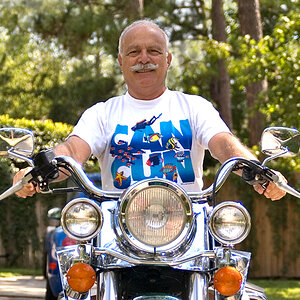
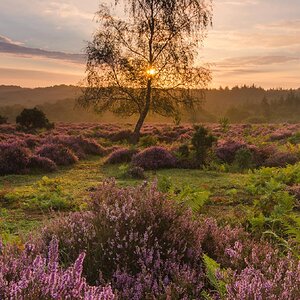
![[No title]](/data/xfmg/thumbnail/37/37280-a7e70a01ccd331918e71645cd4c1f16e.jpg?1619737977)
![[No title]](/data/xfmg/thumbnail/42/42328-c1143adda9734f7d05ce4361e79c27a7.jpg?1619740129)

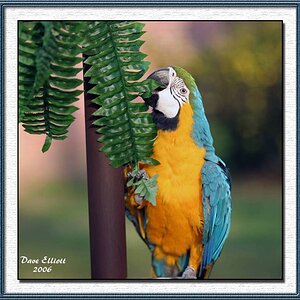

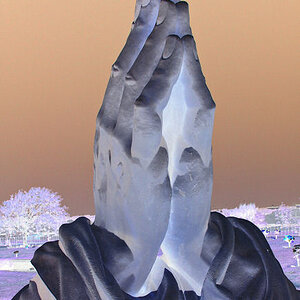
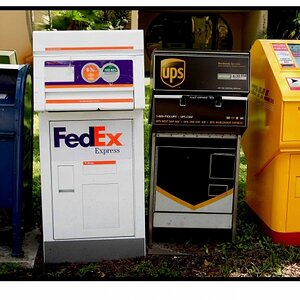
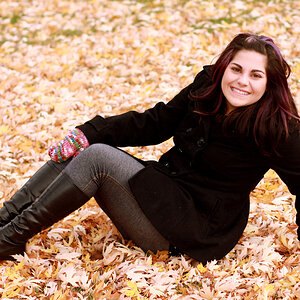
![[No title]](/data/xfmg/thumbnail/41/41799-fe172a668fba7717bf773664387d64aa.jpg?1619739897)